If you’re looking for peaceful seclusion and abundant nature, Costa Rica’s southern Pacific coast is the perfect place to find it. With lush rainforest, spectacular biodiversity, and generally little development, this area of the country still feels like wild jungle. In this post, we will give you a snapshot of Costa Rica’s southern Pacific coast. We’ll also provide additional resources to help you plan a visit.
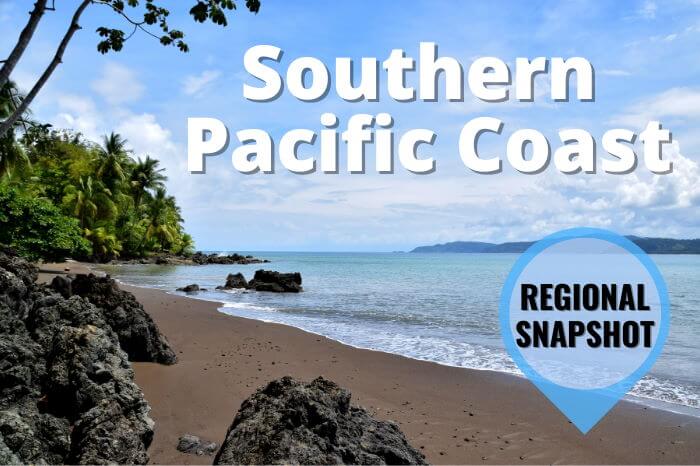
Southern Pacific Coast: Quick Facts
- Closest Airport: Juan Santamaria International (SJO)
- Best Weather: December to July
- Activity Highlights: Rainforest, Beaches, and Wildlife
- Major Destinations: Dominical, Uvita, Drake Bay, Puerto Jimenez
Southern Pacific Coast: Location and Landscape
The southern Pacific coast starts about one hour south of the popular destination of Manuel Antonio. Here, you’ll find the small surfing town of Dominical. Heading south from there, the region continues through Uvita, Ojochal, Palmar, and eventually to the Gulfo Dulce and Panama border.
A large landmass called the Osa Peninsula shelters the Gulfo Dulce from the mighty Pacific Ocean. On the ocean side of this peninsula is the remote village of Drake Bay. On the gulf side is Puerto Jimenez, a local fishing town. In between is some of Costa Rica’s most wild jungle. Notably, much of the Osa Peninsula’s rainforest is protected in a conservation area called Corcovado National Park.
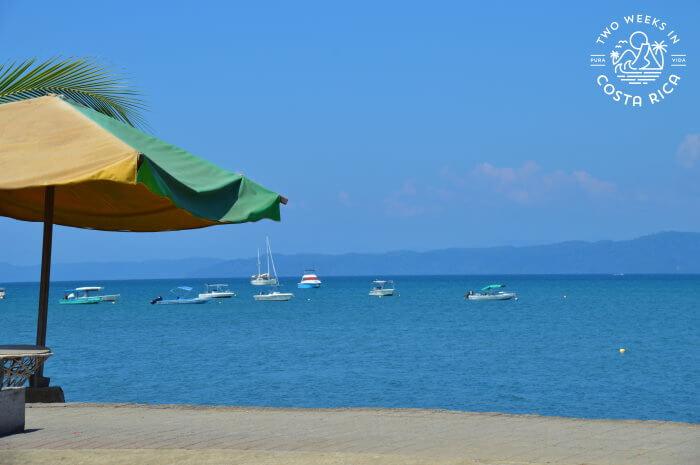
On the inland shores of the Gulfo Dulce, you’ll find some more small towns like Golfito, Zancudo, and Pavones. Driving south, you can reach Costa Rica’s largest border crossing with Panama, Paso Canoas.
The landscape of the southern Pacific coast is lush and green year-round. In many areas, steep mountains rise from the beaches to form a gorgeous backdrop. Large swaths of primary and secondary rainforest hold an enormous amount of biodiversity too (see wildlife section, below). Flatter farm fields with cattle pasture, rice, or fruiting palm trees are mixed in. Though there are some larger towns, many locals live in small neighborhoods that are woven nicely into the landscape.
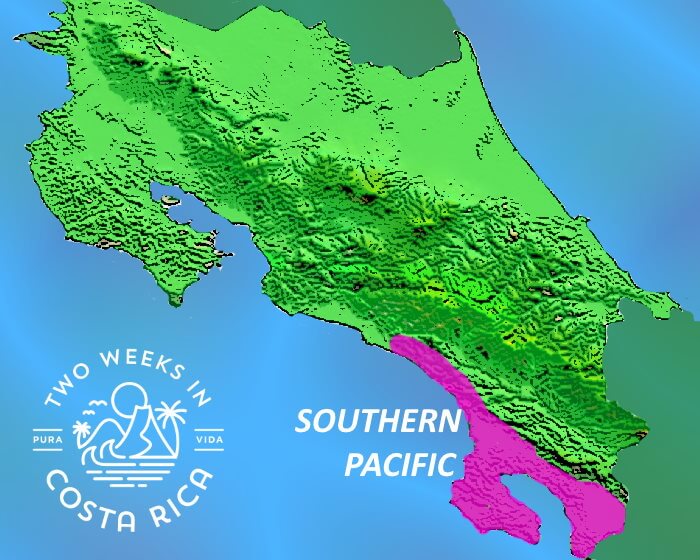
When to Visit: Climate and Weather on Costa Rica’s Southern Pacific Coast
Overview
Along the southern Pacific coast, a dry season runs from December to the end of April. During these months, you can enjoy sunny skies and little rainfall. The rainy season typically starts in late April and continues through November. The rainiest months are September and October.
Expect hot temperatures throughout lowland areas (into the lower 90s (32˚ Celsius)), especially during dry season. At higher elevations, like in the surrounding hills, temperatures can be a little cooler.
With extra precipitation and clouds, the rainy season can feel much more refreshing.
Weather Breakdown by Month
From around mid-December to the end of April, the southern Pacific region typically experiences little rainfall. When it does rain, it usually happens in the evening or at night. These lighter showers help keep the landscape lush and green.
Beginning in April, the first significant rains typically arrive. They often come as afternoon thunderstorms that can last through the night, but not every day. This weather pattern continues through August, with occasional days of heavier rain and tropical storms.
The months of September and October are the rainiest, with some amount of rain most days, especially in the afternoon and at night. Heavy multi-day rains and tropical storms can produce localized flooding and power outages.
Rain usually begins to taper off starting in November; however, in recent years, some Novembers have been quite rainy.
By December, rainfall starts to lessen dramatically. By around mid-December, the dry season begins again.
Southern Pacific Coast: Things to Do
Beaches and Surfing
The southern Pacific coast has miles of almost deserted beaches. Many are lined with shady palm trees and framed by craggy volcanic rocks. The sand is extremely fine with a color that varies from light gray to almost black. This coloration is due to volcanic minerals.
Most beaches have larger waves and occasional riptides, so when swimming use caution. Some others have sheltered coves and tide pools, better for swimming or wading.
Surfing is popular along most beaches in the southern Pacific. Two of the most famous surf towns in the region are Dominical and Pavones. Both attract surfers from around the world.
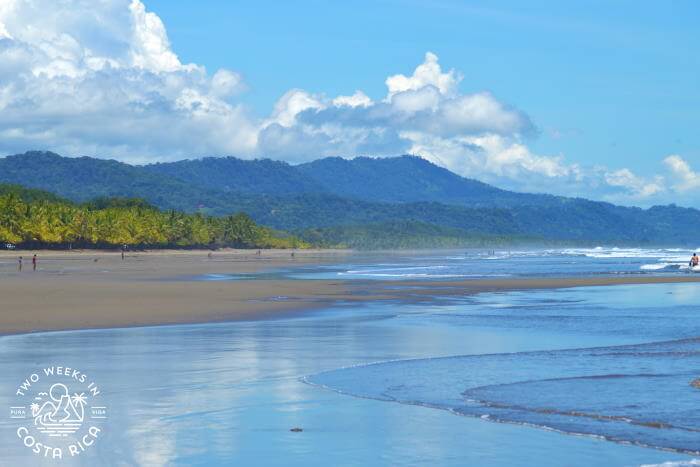
Wildlife Viewing
The wildlife found along the southern Pacific coast is extremely diverse. Within the region are four types of monkey: howler monkeys, white-faced capuchin monkeys, spider monkeys, and squirrel monkeys. Two types of sloth (two-toed and three-toed) are also commonly spotted.
Hundreds of bird species either live or migrate to this area as well. You can find toucans, many types of parrot, tanagers, hummingbirds, flycatchers, trogons, and lots more. Frogs, snakes, and thousands of interesting insects also live within the jungles.
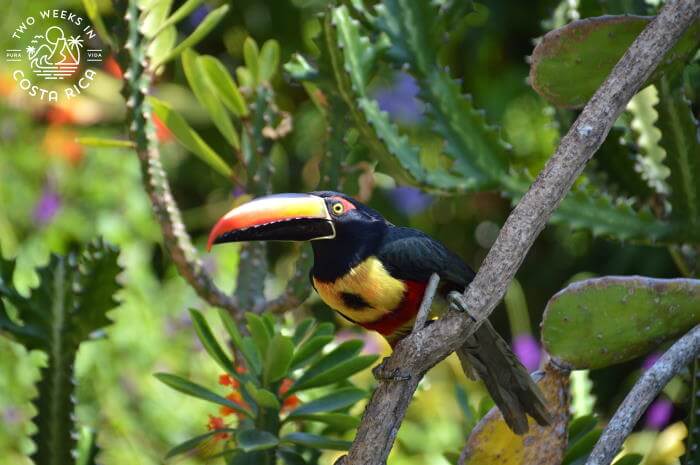
National Parks and Reserves
Corcovado National Park
Located on the Osa Peninsula, Corcovado National Park is one of Costa Rica’s most famous protected areas. This park is very remote and almost pristine. It holds the largest swath of lowland rainforest in Central America and is an important habitat for many endangered species. Day and multi-day tours into the park originate from the towns of Drake Bay, Puerto Jimenez, and less often, Uvita.

Marino Ballena National Park
Known for its giant rocky sandbar that is shaped like a whale’s tail, Marino Ballena National Park is one of Costa Rica’s only marine parks. Located in Uvita, the park consists of several beautiful beaches, the unique sandbar, and protected area of ocean just offshore.
This is one of the best areas in Costa Rica to view humpback whales. The whales visit in two migrations at different times of the year. Read our post Whale Watching in Costa Rica for more information.
Hacienda Baru
In Dominical, you will find a small reserve called Hacienda Baru. This former cattle ranch was transformed into a national wildlife refuge back in the 1990s. In just a few decades, the property has regrown at an astounding rate. Today, hundreds of bird species, monkeys, sloths, and even big cats roam the property. Guided and self-guided tours are available.
For some other fun activities near Dominical, check out our post 8 Things to Do in Dominical.
Waterfalls
Another notable feature of the southern Pacific is its many spectacular waterfalls. All around this region are various rivers and waterfalls where you can swim or take in the rainforest views.
Some notable ones are the Nauyaca Waterfalls near Dominical, Diamante Waterfall and cave, and Uvita Waterfall. Many more can be found with a little searching. Dominical, Dominicalito, Ojochal, and the Osa Peninsula have local swimming holes and waterfalls.
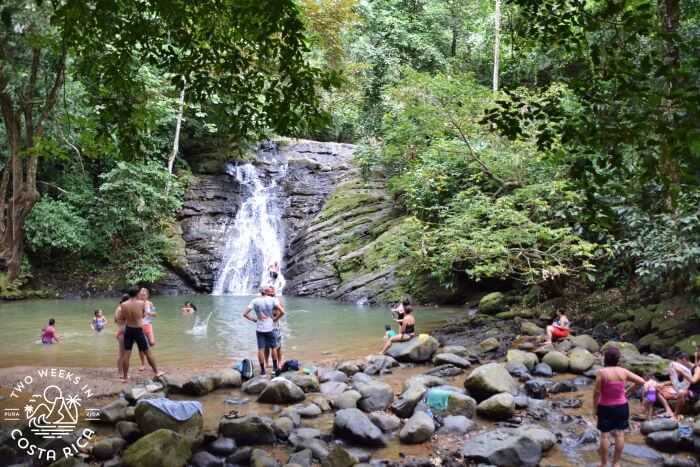
Planning Your Visit to Costa Rica’s Southern Pacific Coast
Airports
Juan Santamaria International Airport (SJO) is the closest international airport. It is located just west of San Jose in the smaller city of Alajuela. SJO is about 3.5-7 hours from destinations in the southern Pacific.
Daniel Oduber Quiros International Airport (LIR) is Costa Rica’s other international airport and is located in the Guanacaste region. This airport is farther from the southern Pacific coast, at between 5-8 hours.
Because the southern Pacific coast is quite a drive from both international airports, many travelers visit other destinations on their way to and from this region.
Getting Around
Rental Car
Renting a car in the southern Pacific region is a little more difficult than in other areas of the country. The major rental car companies in Costa Rica have offices as far south as Dominical/Uvita.
For destinations farther south, delivery of a car can be arranged. However, it is often more economical to rent one from the airport or a more popular tourist destination and keep it while visiting this area. Note that you may want to have a 4×4 vehicle in this area as roads off the main pavement are often steep and dirt.
If you plan to rent a car, we highly recommend using Adobe Rent a Car. They are one of the best rental companies in the country and have new reliable cars. Check out our Rental Car Discount page to save 10-20% and get free extras. Adobe has an office in Uvita, and they can also deliver to surrounding towns such as Dominical and Ojochal.
Shuttle Service
If you’d rather not drive, taking a private shuttle van from the airport and between destinations is an option. Shuttle prices from SJO Airport to destinations along the southern Pacific coast range from around $250-$450/van transfer one way, getting more expensive the farther south you go. To check prices and book with a reliable company, see our Shuttle Transfers page.
Boat Shuttle
For the destination of Drake Bay on the Osa Peninsula, a boat shuttle (boat taxi) provides the best access since road conditions are generally poor. In this case, we recommend driving or taking a shuttle van to the town of Sierpe. Daily boat shuttles leave from there and are quite affordable. For more information and a schedule, read our Drake Bay post.
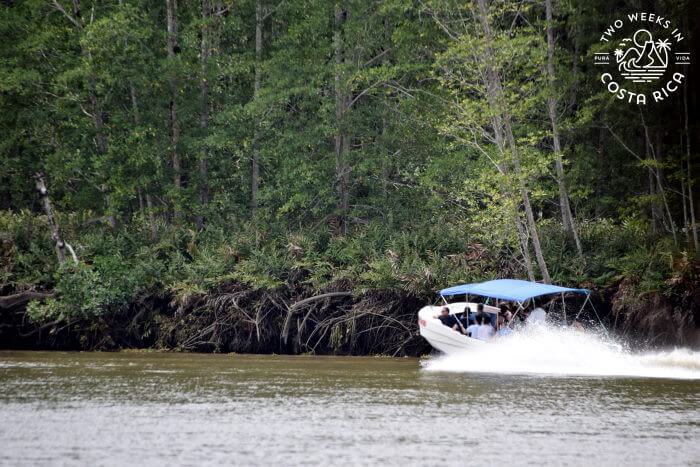
Major Destinations
Here’s a list of the southern Pacific coast’s most popular destinations and their proximity to SJO Airport. We’ve written detailed articles on many of these towns so use the links below to find more information.
Dominical – Approx. 3.5 to 4 hours from SJO
Uvita – Approx. 4 to 4.5 hours from SJO
Ojochal – Approx. 4.5 hours from SJO
*For more information on the above towns, read our post about the Costa Ballena.
Drake Bay – Approx. 6-7 hours from SJO, including boat taxi (domestic flights are available)
Golfito – Approx. 6 hours from SJO (domestic flights are available)
Puerto Jimenez – Approx. 6-7 hours from SJO (domestic flights are available)
Pavones – Approx. 7-8 hours from SJO
All-Inclusive Resorts
There are no large all-inclusive resorts in the southern Pacific region. However, many hotels and boutique resorts on the Osa Peninsula offer all-inclusive packages that include meals, transportation, and tours, along with accommodations. This is mostly because they are so remote and there isn’t otherwise much around. Costa Rica does have larger all-inclusive resorts, but most are located in Guanacaste Province.
Conclusion
Costa Rica’s southern Pacific coast is the perfect place for those wanting to experience the country’s rainforest and abundant wildlife. With lots of small towns to explore, it’s also a great off-the-beaten path region with plenty of opportunity for a serene escape.
Planning a visit to the southern Pacific coast and have a question? Leave us a comment below.
Looking for more resources to help you plan? Check out these posts:
Costa Rica’s Central Pacific Coast: Regional Snapshot – Many people visiting the southern Pacific coast stay somewhere in this region to break up the drive. Find details to plan your visit with this post.
Packing for Costa Rica: The Essentials – Worried you don’t have the right gear for rainforest conditions? Check out our detailed packing post to come prepared!
Rental Car Discount – The southern Pacific coast is best visited with a four-by-four vehicle. This will allow you to get off the main roads and explore. Use our rental car discount to save 10% or more on a quality rental and get free extras.

